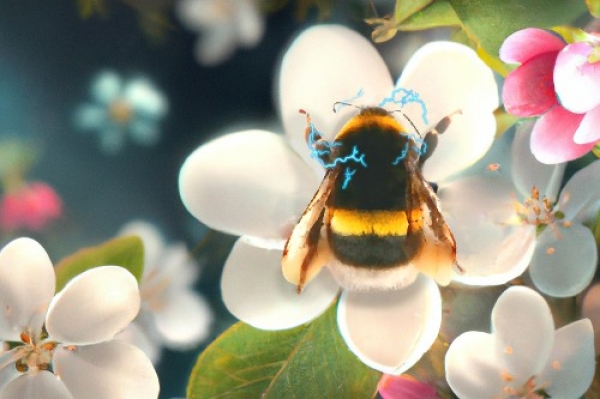The study, published in PNAS Nexus today, shows that chemical sprays alter the electric field around flowers for up to 25 minutes after exposure. This impact lasts substantially longer than natural fluctuations, such as those caused by wind, and causes a reduction in bee feeding effort in nature.
Dr Ellard Hunting of Bristol’s School of Biological Sciences and his team noted that fertilisers did not affect vision and smell, and set out to mimic the electrical changes caused by fertilisers and pesticides in the field by electrically manipulating flowers. This showed that bumblebees were able to detect and discriminate against the small and dynamic electric field alterations that are caused by the chemicals.
Dr. Ellard Hunting said: “We know that chemicals are toxic, but we know little about how they affect the immediate interaction between plants and pollinators.
Read More: University of Bristol
Artist’s impression of bumblebee interacting with flower (Photo Credit: Benjamin and Joseph Tiso)


